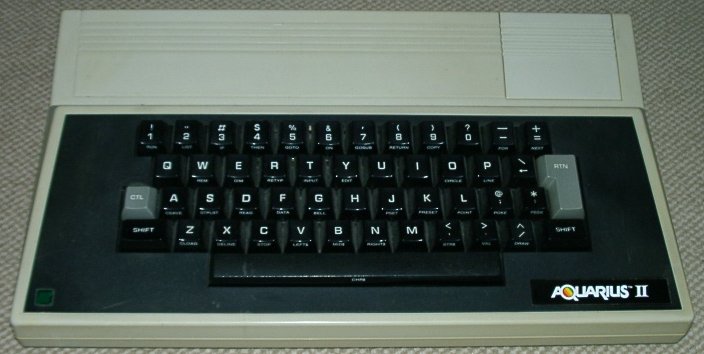I admire the effort you put into replicating Ebert's writing style. It does "read" like him, though perhaps not quite so righteously indignant (though perhaps he picked that up more in his later years - he's still relatively young here, with plenty more flops ahead of him). But he did love E.T., so he would no doubt loathe this.
Thanks! I read quite a bit of Ebert reviews of terrible movies from the early 1980s, which was both its own punishment and its own reward.
Wow. Now, assuming that Ebert (who is known for being idiosyncratic and sometimes overly defensive of his "pet" actors, especially if they're attractive women) speaks for the consensus here, Fox may well emerge from this fiasco relatively unscathed. But I doubt it; high-profile flops tend to drag down those who are involved in them. If so, one person who will be vindicated? Brandon Tartikoff, who famously described Fox (in rejecting him for Family Ties; creator Gary David Goldberg eventually wore him down) as someone whose face would never be on a lunchbox. (Back to the Future, of course, proved Tartikoff wrong; he would keep such a lunchbox in his office for the rest of his career.)
Do you think this fiasco might affect casting for Back to the Future?? Only time will tell.
Interesting that he and Fox (who were in the running for the same part in a certain film) appear onscreen together. Was that a deliberate nod?
Since you’ve spotted one of my in-jokes (but missed at least one other, ha!), I'll give away this much: Eric Stoltz will not play the role of Marty McFly ITTL. I will not have anyone claim that this TL is derivative of Fringe!
The 1980s, of course, saw the rise of "Spielberg the Thalberg", the visionary producer who (in the words of Ebert himself, in a contemporary OTL review) could match the right director with the right project. Indiana Jones notwithstanding, this probably hobbles that image. (Speaking of which, what happens to Temple of Doom? Is it delayed?)
See my prior reply to Dan McCollum. Temple of Doom is a better movie ITTL, although “better” and “more successful” are not always synonymous….
Also, this is a major directorial flop for him, the first since 1941, and not seen again until Hook IOTL (his late 1980s disappointments were too quiet to do much damage to his reputation). What's worth noting is that he followed both disappointments with twin triumphs (Raiders and E.T. in the early 1980s, and then Jurassic Park and Schindler's List in the early 1990s). Can he achieve the same rebound ITTL, as well? Or is Spielberg doomed as so many of his New Hollywood colleagues were before him?
Time will tell!
Maybe, but kids got themselves into a lot of scrapes in 1980s movies IOTL (and remember The Goonies, which has Spielberg's fingerprints all over it).
This is a really good point, and actually changed my mind on something down the line. I still think the script would get updated given that the original cast of E.T are now in different states of physical development; C. Thomas Howell is being cast as a high-schooler while Henry Thomas is a very youthful-looking 12. You simply couldn’t reassemble the original cast for “a few days later.”
Agreed - I definitely like his 1980s Genesis material better than his solo material (and, for the record, I do like Phil Collins, on the whole; I find his flaws as a songwriter and musician more frustrating than offputting). Maybe, in retrospect, Banks and Rutherford had more creative influence than we thought?
That’s really, really interesting. I’ll have to think about it. Collins is, of course, on the short list of “major musical figures of the 1980s,” so I’ve given a lot of thought as to where he’s going.
I need to retcon the Phil Collins bit from the Boston *Wikipedia entry; Amanda is a phenomenon in 1983, not 1984, so it makes no sense for Delp to be nominated a year later. (It’s a remnant from an earlier draft.)
Sheesh, it doesn't even have "Something to Talk About" on there. But look on the bright side: at least he didn't lose to Fine Young Cannibals (!)
1990 wasn’t exactly a banner year for the Grammys: you have the first invalidated award (the infamous Milli Vanilli as Best New Artist, which would be preposterous without the lip-synching fiasco); you’ve got Michael Bolton winning “Best Pop Vocal, Male” for the god-awful “How Am I Supposed to Live Without You?” and “Wind Beneath My Wings” – a song you can imagine being plucked from Air Supply’s reject pile – as Record of the Year and Song of the Year. The “Best Rap” category featured one actual nominee (Public Enemy’s “Fight the Power”), three joke songs (Young MC’s “Bust A Move,” which won, as well as The Fresh Prince’s “I Think I Can Beat Mike Tyson” and Tone Loc’s “Funky Cold Medina”) and an R&B song (De La Soul’s “Me, Myself & I”). I would say that Flavor Flav is probably still upset about that loss, but you know, life’s been pretty good to him, all things considered.
(Apologies in advance to any fans, friends, and/or family members of Michael Bolton and Bette Midler. Both have very good – if somewhat different – things happen to them ITTL. Seriously! No apologies to Young MC, Tone Loc, or Will Smith, though – I love those songs, but they’re obviously not Grammy material.)
Also, the best-ever parody of "The End of the Innocence" can be found at the end of this MADtv parody of Cold Case. The guy even sounds like him!
I’ve never been a huge MADtv fan, but this sketch is priceless. I actually laughed out loud at the Bon Jovi parody.
Fair enough. It always amused me that, IOTL, despite having so many memorable songs to his name, he [Billy Joel] only hit #1 three times, and I doubt anyone besides hardcore fans and popular culture enthusiasts like myself would be able to tell you which three off the top of their head.
Piano Man seems like a pretty glaring omission, doesn’t it?
For the record, for those of you who are unwilling to look it up, the three OTL chart-topping singles are:
- "It's Still Rock and Roll to Me" in 1980. Yes, this was his first #1 hit. Note that "Just the Way You Are" won for Record of the Year 1977, but only reached #3.
Did you deliberately pass up an opportunity to make an “It’s Still Billy Joel to Me” reference?? And while we're on Weird Al, let me say that "When I Was Your Age" is definitely butterflied away ITTL. Apparently there's an argument as to whether it's a "Dirty Laundry" style parody; I have no idea what the other side of that argument would be. It's obviously a "Dirty Laundry" style parody.
- And finally, his love-it-or-hate-it novelty song, "We Didn't Start The Fire", in 1989. Given its subject matter, I suspect that many people on this board probably have a soft spot for it - and I positively adore it - but I can see why others don't. At least it is one of his most well-known songs.
I might have to butterfly it away, simply because I'm not sure I'm up to the task of re-writing the last third of it!
Yeah, this is definitely my favourite part of the timeline. Thanks to many updates covering completely different subjects, each update comes as a pleasant surprise— and yet one that makes perfect sense.
Thanks for reading, conchobhar, and thanks for the kind words!
On ET II: I wonder what its legacy would be. Probably just swept under the rug and ignored by everyone, but I wouldn't be surprised if it turned into TTL's version of The Matrix sequels— seen as a blemish on the first film and treated with complete disdain.
I would say it winds up somewhere between Breakin' 2: Electric Boogaloo (generally regarded as one of the most ridiculous sequels of all time IOTL) and Ishtar (generally regarded as one of the worst movies of all time IOTL). No chance it's ever appreciated ironically; the production values and acting are simply too good. It won't be a candidate for TTL's equivalent of Mystery Science Theater 3000 (if there is such a thing).
Last edited:






